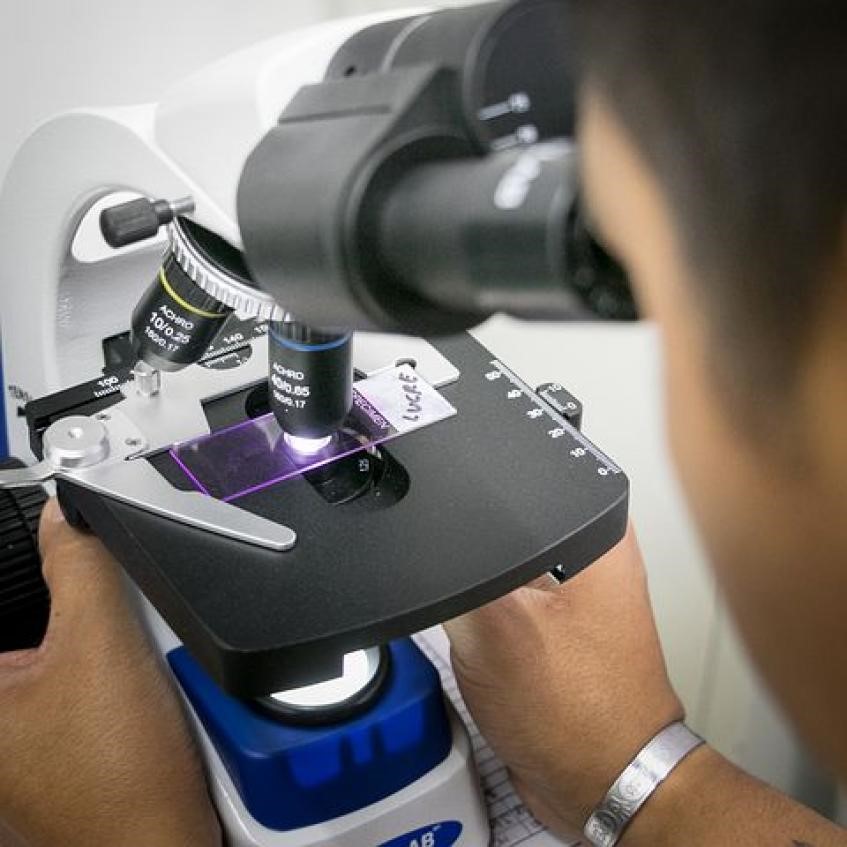美国FDA表示,抽样研究的中期结果显示,市场上经过再处理后的十二指肠镜的污染率高于预期。

美国FDA本周在安全公告中表示,针对目前临床上使用的十二指肠镜进行的抽样研究初步结果表明,经过再处理后的十二指肠镜的污染率高于预期。这一消息恰逢奥林巴斯(Olympus)公司同意支付8500万美元,用于了结自2015年开始的一项与其十二指肠镜相关的联邦调查。
早在2015年,FDA就命令美国三家十二指肠镜制造商——奥林巴斯(Olympus)、富士(Fujifilm)和宾得(Pentax)——进行两项上市后监督研究,以确定医疗保健机构能否对十二指肠镜进行适当的清洁和消毒。FDA要求这三家公司分别进行一项抽样研究,以便确定其十二指肠镜经过再处理后的污染率,并进行一项人为因素研究,以便评估受过培训的医务人员按照再处理指示进行操作的有效性。
今年早些时候,FDA向这三家公司发出了警告信,称其未能满足上市后监督要求。此后,这三家制造商开始收集所需数据,并分别向FDA提供了初步研究结果。
结果显示,多达3%的样本对“低关注度”生物体的100多个菌落形成单位检测呈阳性,而还有3%的样本对“高关注度”生物体检测呈阳性。这些生物体是一些往往会引起某种疾病的细菌,例如大肠杆菌或金黄色葡萄球菌。
FDA表示,这三家医疗器械制造商目前正在进行根源分析,以便更好地了解其初步培养结果。可能造成污染的部分因素包括器械损坏和再处理过程中所发生的错误。鉴于再处理后的十二指肠镜的污染率高于预期, FDA更新了关于医护人员可以采取哪些措施来改善十二指肠镜再处理能力的建议。
这些建议包括严格遵循再处理说明,同时实施相关配套措施, 最大限度降低十二指肠镜感染的传播风险,如微生物培养、灭菌、使用液体化学杀菌剂处理系统和重复高水平消毒。
FDA还建议医务人员检查十二指肠镜中难以清洁的部件(抬钳器凹槽),如有任何可见污垢或碎屑,应重复清洁。FDA表示,用户还应遵循制造商的建议进行器械检查、泄漏测试和维护,每年至少将器械交给制造商进行一次检查和维护。
美国FDA医疗器械和辐射健康中心(CDRH)主任Jeff Shuren表示:“我们还大力鼓励医护人员参与制造商的抽样和培养研究,并鼓励他们自己进行十二指肠镜监测抽样和培养,以便降低感染风险。”
Shuren还表示,不言而喻,遵循制造商的再处理和维护说明固然重要,但却不足以预防使用十二指肠镜可能导致的所有感染。FDA一直在与开发商合作设计新产品,包括设计一次性组件。
“产品设计方面的技术进步有望降低污染风险,提高患者安全,”Shuren说。“我想强调的是,虽然考虑到十二指肠镜的使用数量众多,但单个患者因使用经过不当再处理的十二指肠镜受到感染的风险仍然相对较低。”
Shuren还表示,自首次实施改进十二指肠镜再处理技术的安全措施以来,FDA注意到与患者感染相关的报告逐渐减少。
“近期对医疗器械报告的分析结果表明,与患者感染相关的报告数量在2015年达到峰值,为 250份,但在2017年和2018年下降了62%,在这两年里均不到100份。”Shuren表示。
英文原文
Reprocessed Duodenoscopes Are Still Too Dirty
FDA said interim results from sampling studies indicate higher-than-expected contamination rates after reprocessing of duodenoscopes currently on the market.
Preliminary findings from sampling studies of duodenoscopes currently in clinical use indicate higher-than-expected contamination rates after reprocessing, FDA reported in a safety notice this week. The news coincided with Olympus agreeing to pay $85 million to settle a federal investigation that began in 2015 related to its duodenoscope.
Back in 2015, FDA ordered all three U.S. duodenoscope manufacturers—Olympus, Fujifilm, and Pentax—to conduct two postmarket surveillance studies to determine whether healthcare facilities were able to properly clean and disinfect the devices. The companies were each told to conduct one sampling study to characterize contamination rates after reprocessing, and one human factors study to assess how effectively the trained hospital staff follow reprocessing instructions.
Earlier this year, FDA slammed all three companies with a warning letter for failure to meet these postmarketing surveillance requirements. Since then, the manufacturers have begun collecting the required data and provided the agency with preliminary study results.
The results show that up to 3% of samples tested positive for more than 100 colony forming units of "low concern" organisms that are unlikely to cause serious infections, and an additional 3% of samples tested positive for "high concern" organisms. These are bacteria more often associated with disease, such as E. coli or Staphylococcus aureus (staph).
The device manufacturers are currently conducting root cause analyses to better understand these preliminary culturing results, FDA said. Some factors that may contribute to contamination include device damage and errors in reprocessing. The higher-than-expected contamination rates prompted the agency to update recommendations regarding steps healthcare providers can take to enhance duodenoscope reprocessing.
Those recommendations include meticulously following reprocessing instructions and implementing supplemental measures to reduce the risk of infection transmission, such as microbiological culturing, sterilization, use of a liquid chemical sterilant processing system, and repeating high-level disinfection.
The agency also recommended hospital staff inspect a component of the duodenoscope that is difficult to clean, called the elevator recess, and to repeat cleaning if any soil or debris is visible. Users also should follow the manufacturer's recommendations for inspection, leak testing, and maintenance of the device and reduce the device to the manufacturer at least once a year for inspection and maintenance, FDA said.
"We also strongly encourage healthcare providers to participate in the manufacturers’ sampling and culturing studies, and consider initiating their own duodenoscope surveillance sampling and culturing to reduce the risks of infection," said Jeff Shuren, MD, director of FDA's Center for Devices and Radiological Health.
Shuren said it has become clear that following the manufacturer's reprocessing and maintenance instructions, while critical, is not sufficient to avoid all infections associated with the use of duodenoscopes. FDA has been working with developers on new product designs, including disposable components.
"Technological advances in product design hold promise to reduce the risk of contamination and enhance patient safety," Shuren said. "I want to emphasize that an individual patient’s risk of acquiring infection from an inadequately reprocessed medical device remains relatively low given the large number of such devices in use."
He said the agency has also seen a steady decline in reports associated with patient infections since safety measures to improve reprocessing techniques were first implemented.
A recent analysis of medical device reports indicates that the number of reports associated with patient infections peaked in 2015 at 250 reports and has declined 62% to fewer than 100 reports a year in 2017 and 2018, Shuren said.
内容来自:MDDI
整理翻译:奥咨达
奥咨达翻译团队根植于中国,面向全球,专注为医疗器械领域的企业提供专业、高效的翻译解决方案。翻译领域包括医疗器械的研发、注册、临床、上市后监督、营销、管理、培训等,译稿已涵盖医疗器械领域的所有类型。 奥咨达翻译组联系方式: 邮箱:trans@osmundacn.com
准备好开始了吗?
那就与我们取得联系吧
有一个医疗器械项目想和我们谈谈吗?您可以填写右边的表格,让我们了解您的项目需求,这是一个良好的开始,我们将会尽快与你取得联系。当然也欢迎您给我们写信或是打电话,让我们听到你的声音!
24小时免费咨询热线:
400-6768632